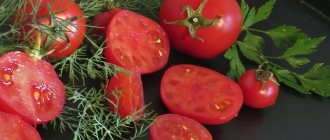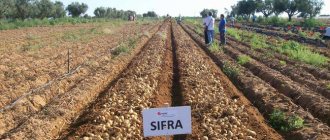In the conditions of the short and unpredictable summer of central Russia, it is extremely difficult to grow grape varieties with very large and sweet berries. Because they ripen well only in warm southern regions. But this does not mean at all that you will not be able to harvest grapes, for example, in the Moscow region. It's very possible. You just need to choose the right variety. And precisely the Zilga grape is the very variety that is most adapted to a changeable climate and short summer.
Caring for it will not require superhuman efforts from you. And you will harvest small but tasty berries every year. You don't even need a greenhouse for this. This grape variety grows well in open ground. Some gardeners do not even cover it for the winter. Because it has quite high frost resistance. We will talk about this and other characteristics of Zilga grapes later in the article.
What varieties are called technical
Zilga grapes: photo
The Zilga grape variety is technical. That is, this is a variety that is originally grown for making wine. But this does not mean at all that it cannot be consumed fresh. Or prepare, for example, juice. And this despite the fact that it is early ripening. And wine made from Zilga grapes is considered unusually tasty by many gourmets.
Technical varieties have common characteristics. Such grapes place less demands on the soil. And also unpretentious in care. By making minor mistakes, you will not ruin the harvest. Technical varieties are usually more frost-resistant than others. Even if the summer weather is not very pleasant, they still accumulate sugar. After full ripening, the berries do not spoil on the bush. On the contrary, they can accumulate more sugar.
Such varieties are easy to propagate and form. They are also amazing at their growth rate. Berries can be used not only for making wine, they are universal. Well, the last and very important characteristic. The yield of technical varieties is always at its best.
What will make Siegl happy?
The Zilga grape, which is universal for its intended purpose, ripens in 100–110 days after the leaves bloom on the vines. This is one of the fastest ripening varieties in northern viticulture. At the same time, on its tall bushes the shoots ripen very well. Of these, up to 85% are fruitful.
Zilga flowers are bisexual; there are no problems with pollination of flowering racemes.
The medium-weight clusters (up to 400 g) consist of dark berries, weighing an average of 4.3 grams, coated with purine, which is why their hue, which gives the name to this hybrid form, is bluish. Grape juice is slightly colored.
By the time of harvest, Zilga berries accumulate 18–22% sugar and up to 5 grams of acids per liter of juice. According to the tasting scale, Zilga has a rating of 7.1 points.
https://www.youtube.com/watch{q}v=Ns4-n2Ezwok
This form of grape is resistant to cold temperatures down to -25 ºС, damage to true and downy mildew and gray rot.
Zilga grapes: variety description and characteristics
These were the general characteristics of technical varieties. Now let’s look at the varietal characteristics of Zilga grapes in more detail. It was bred by the Latvian breeder Sukatnieks based on the Smuglyanka variety. Which was pollinated by the varieties “Yubileiny Novgorod” and “Dvietes Zilas”. The goal of the experiment was to obtain a variety that would produce a good harvest in the Latvian climate. And the experiment was definitely a success. And another variety is responsible for excellent frost resistance. It is this quality that is ensured by the Amur grape gene.
"Zilga" belongs to the early grape varieties. This means that the berries are ready for consumption within 3.5 months after flowering. The grapes are distinguished by high growth vigor. And also excellent ripening of shoots. The fruiting rate is over 80%. And this is a very high result.
To form a bush, experts recommend fan pruning. And also tie the plant to a trellis. The grapes are pruned, leaving about 7 “eyes” on the vine. "Zilga" can be combined with all kinds of rootstocks. There is no need to ration the harvest (remove some fruits so that the rest ripen properly). Because the plant has enough strength to ripen the entire crop.
If we talk about frost resistance, grapes can tolerate temperatures of -26 degrees without additional shelter. That is, only under snow cover. Without snow, even the most frost-resistant plant will freeze. Another undoubted advantage of the variety is its self-pollinating ability. As well as high resistance to major grape diseases (oidium and mildew). On a five-point scale – four points.
The berries are medium-sized and the bunch is very small (90-100 grams). Color blue. The sugar content in berries is 20-22%. They also do not have very high acidity. With good care, in a good year you can get 21-23 kilograms of grapes from a strong mature plant. Since wasps are indifferent to this grape variety, the berries, after full ripening, can hang on the branches for some time. Sometimes they even get raisinized.
Despite the fact that technical varieties are considered wine varieties, the Zilga variety is considered universal by many. And they use it both as a wine and table variety. And most gardeners note that it looks wonderful as a decoration for a terrace or gazebo.
Incredible winter hardiness
This hybrid is a winter-hardy variety.
In the northern regions, where not every variety can be grown even under cover, grapes have appeared that can withstand severe frosts without additional protection.
The prerogatives of the bred hybrid attracted the attention of grape lovers who unsuccessfully tried to grow the vine in the harsh climate of the north of Belarus, the Baltic and Scandinavian countries (Sweden and Norway), and even in certain regions of Canada. In terms of taste, the resulting berries resembled their ancestor, the famous Smuglyanka
Pollen from other varieties gave them an original aftertaste and the ability to be used in any need - canteens and industrial
In terms of taste, the resulting berries resembled their ancestor, the famous Smuglyanka. Pollen from other varieties gave them an original aftertaste and the ability to be used in any need - canteens and industrial ones.
Early is good!
In the short summer conditions of the northern regions, gardeners were attracted by the opportunity to grow an ultra-early variety that ripens at the end of July.
The abundant harvest for the harsh climate (about 12 kg of grapes per bush) also became a pleasant feature. Zilga had many advantages. This led to its spread, long-term use of the variety, and demand for planting material.
When and how to plant
Technical varieties, as we have already said, are not too demanding on soil fertility. Typically, soil requirements for grapes are limited to the following parameters. Low groundwater level, sandstone or loam. The soil acidity level is about 6. At the same time, experienced winegrowers note that the most delicious wine made from Zilga grapes is obtained when it grows on poor soil. Which contains mainly sand. And also a lot of stones.
When choosing a place for seedlings, remember that it should be well lit by the sun. And also have protection from the wind. If you plan to plant grapes next to a terrace or gazebo, then you need to place them on the south side.
As a rule, grapes are planted in spring or in the first half of autumn. Spring planting should be carried out after the threat of frost has passed and the ground has warmed up sufficiently (at least +10 degrees). If you plan to plant grapes in the autumn, be guided by the weather forecast; the plant should have time to take root before frost, and rooting will take at least a month. This rule determines the timing of autumn planting.
Agrotechnical features
Despite modest heat requirements, bushes should still be placed in sun-heated areas. Slopes of northern aspects, plains of ravines, valleys and other places with stagnant cold air are very unsuitable for planting.
For large areas, they look for southern slopes with a sufficient slope and arrange vineyards in their upper part. It is also necessary to show balance in relation to the water regime of the soil. On the one hand, the variety responds well to sufficient moisture in the root layer, but excessively wet and, especially, swampy areas are not suitable for this.
The choice between thickened and unthickened growing systems should be made in accordance with local climatic conditions and, above all, long-term minimum winter temperatures. It will be great if the frost resistance of the hybrid is enough to form powerful tall bushes, and even better for planting arches and arbors with them.
In this case, you can count on an excellent harvest and better quality fruit. If the thermometer in winter often exceeds -25 degrees, then, willy-nilly, you will have to cover the grape bushes, and then shape them according to squat and non-standard patterns. The results of cultivation in this case will be more modest, but will please many winemakers.
Pruning plants that have started to bear fruit is not difficult. The first buds of the variety are also characterized by high fertility, and therefore it is suitable for short pruning of 3-4 buds, and in general the load is carried out from 30-40 buds. For larger formats this number can also be increased slightly.
When planning a vineyard, it is necessary to take into account the biological characteristics of zilga. Likes to grow in sunny areas with sandy or sandy soil with a slightly acidic reaction (pH level should be between 5-5.7), so if the soil is too acidic, liming the area is useful.
What else to read Alex’s grapes (In memory of Kostrikin) - description and photo of the variety
Grapes can also grow in the shade, but the lack of lighting will greatly affect the quality of the fruit. You should not plant grape seedlings near the walls of houses and near tall trees, which will crush the grapes with their roots.
High-quality seedlings should have a well-developed root system, smooth, neat shoots with numerous eyes. Before planting, the roots are soaked in water or a growth stimulant. For better adhesion to the soil, the roots are also dipped in a clay-manure solution.
Before planting, the area is dug up and superphosphate, wood ash and humus are added. A deep hole measuring 50 * 70 centimeters is dug under each seedling. Place a bucket of humus at the bottom of the hole and mix thoroughly with the soil.
Ready! The most delicious wine is obtained by growing Zilgu grapes on poor and sandy soils.
Caring for a newly planted grape seedling comes down to systematic watering, fertilizing and loosening the soil. To build a strong root system, grapes need a lot of water. In the first year, the plant is watered up to 15 times.
Dense soil is watered less frequently, up to 10 times in summer. It is especially important to pay attention to watering at the beginning of summer and when the grapes ripen. In September, watering is reduced. It is advisable to water the vine along furrows dug on both sides of the plant in a thin stream. Each young grape bush requires up to three buckets of water.
It is necessary that the soil is moistened to a depth of 80 centimeters. In the second summer, the plant is watered 8-9 times. In the spring months, water is watered once, since the soil is still sufficiently saturated with snow moisture.
After watering, the soil is loosened, while getting rid of weeds. If the soil is poor in nutrients, then in the first year in the fall, manure is added to the soil - up to 4 kilograms per square meter. With well-fertilized soil, fertilizing begins only next year.
As the bush grows, the vines are tied to a support. Usually the first garter is carried out from the second year of the plant’s life. The best support for grapes is a trellis. Zilga is great because it doesn't need to be covered for the winter. In winter, you can cover only the base of the bush to prevent the roots from freezing.
Advice! It is best to place the grape bush on the south side of the site, 4-5 meters from the wall of the house. This will provide maximum coverage and protection from cold winds.
Choosing a landing site
The place for the Zilga grape variety must be prepared in advance, preferably a year before planting. If necessary, add a sufficient amount of sand to the soil. A hole for grapes must be dug quite large - about 65 cm deep and wide, and if you plan to plant more than one bush, then the distance between them should be at least one and a half meters. Although experienced winegrowers advise planting more densely, if you are going to grow grapes specifically for making wine, with such planting the quality of the wine is much higher.
Planting grape seedlings takes place in the following order: the hole is prepared in advance, immediately before planting, at least a bucket of warm water is poured into it. The soil with which you will then cover the roots must first be prepared; for this, mix the soil with rotted manure, adding phosphorus and potassium fertilizers (about 200 grams each). Then fill the hole a few centimeters with broken brick, crushed stone or expanded clay - this will provide the necessary drainage. Place a mound of earth on top of the drainage layer, place the seedling on it and very carefully spread its roots. Before you start filling the hole, secure a peg next to the seedling, which will initially serve as a support for it (this must be done now, so that later during installation you do not damage the roots of the grapes). Now you can fill the hole with the prepared nutrient mixture and water it with another bucket of warm water, after which you will mulch the soil around with humus or other material.
Zilga grapes and care for them
Caring for Zilga grapes is not much different from caring for other varieties and includes basic actions: timely watering and fertilizing, pruning and covering for the winter.
In the first years, it is recommended to water young plants four times.
- In the spring, after you have removed the shelter, you need to water the plant at the root using 35-40 liters of water, having first mixed it with ash. If the frost has completely passed, then water with warm water. If you need to delay the awakening of the grapes, then it is better to take cold water for watering.
- Water the grape bushes when they begin to bud.
- And then again, when the flowering is almost over.
- The final watering is called “moisture recharging” and is carried out about a week before the plant is to be covered for the winter.
And for adult bushes it is recommended to make do only with moisture-recharging watering.
Fertilizing and pruning the Zilga grape variety
The amount of fertilizer that you applied at the time of planting should be enough for the grapes for the first 2-3 years. Then the plant will begin to bear fruit and will need additional fertilizing throughout the season: in the spring, mainly nitrogen fertilizers, then during the flowering period, a complex mineral fertilizer should be used, during the ripening period the emphasis should be placed on potassium and phosphorus fertilizers, and after harvesting, it is necessary to apply only potassium. It is important to be very careful with nitrogen-containing fertilizers - after July, nitrogen should not be contained in complex fertilizers, as this inhibits the development of annual shoots.
In the spring, after removing the shelter, when the average daily temperature is above zero, it is necessary to inspect the plants and carry out “sanitary” pruning, removing all frozen or damaged shoots. Be careful, this must be done before the sap flow begins. In the summer months, stepsons should be removed, excess branches should be trimmed, and perhaps in the second half of summer you will have to tear off some of the leaves, which will shade the berries and interfere with their ripening.
The main pruning work should be carried out in the autumn. Remove all shoots that are not strong enough, and the rest should be trimmed according to the pattern, leaving about 6 “eyes”. It is believed that the Zigla grape variety does not need to be covered for the winter, but if the winter in your area is not snowy enough, then it is necessary to cover it, and in the first year this must be done especially carefully. There are many methods and materials for shelter, but the most reliable is considered to be a complex shelter with spandbond and spruce branches, and with the onset of winter, you definitely need to throw more snow on top of the shelter.
Growing technology
Soil selection
It is important that the soil is loose, warm, light and has neutral acidity. In a neutral environment, the plant consumes more macroelements
Thanks to the crushed stone and sand in its composition, the soil has the property of breathability.
Additional Information. Grapes grown on rocky soil have a delicate taste, clearer juice and the ability to age.
Grapes are a drought-resistant crop. Therefore, plants should not be planted in areas where groundwater is closer than 1.5 m.
The place chosen for viticulture should be open to sunlight, level and with a slight slope
It is important to protect the grapes from wind and drafts. For example, you can plant plants along the wall of a building or next to other trees
Preparation of seedlings
Annual sprouts up to 50 cm high are preferred
It is important that the roots are not damaged or affected by mold. A healthy plant has at least 3 developed roots
Until the time for planting comes, the grapes are placed in a separate container with soil at a temperature of at least 25 degrees. Immediately before the procedure, cut the shoots and coat them with melted paraffin.
Planting in open ground
For the southern regions, the right time to plant grapes is April. For the Moscow region - May. The main condition is the earth warmed up to 15 degrees.
It is better to prepare a hole for grapes in the fall. The depth varies from 20 to 80 cm. Fill it with compost and humus and leave it until the summer season. As a last resort, dig a hole in March, add fertilizer and leave for 1 month to allow the soil to settle. You can use complex mineral fertilizers and ammonium nitrate. If only natural fertilizers are preferred, use ash.
Important. A young plant with an open root system is planted in May so that it has time to take root and withstand winter frosts.
Place crushed stone, branches and wood chips on the bottom. To irrigate the roots of grapes, you can install a special tube. Then place the seedling in the ground, cover it with soil, water it and add mulch. It is advisable to pour gravel between the rows, which will retain heat and moisture.
Grape care
For the first 2-3 years, after each watering or rainfall, the soil must be loosened
It is also important to remove weeds, monitor the condition of grape leaves, irrigate with water on time, apply fertilizers and treat with fungicide against diseases
On a note! Apply liquid fertilizers in the spring months, powder fertilizers in the fall.
From the following year, it is enough to water the plants 3 times per season.
When the grapes reach 1.7 m, cut off the top. Remove all lateral shoots so that the nutrients reach the fruiting shoots and are spent on fruit ripening. In July, you should cut off the leaves that cover the bunches and do not allow access to sunlight.
To protect plants from diseases, preventive measures should be taken. This will give greater results than trying to cure a diseased bush. All chemicals act to destroy the infection, and not to restore damaged stems and leaves
Therefore, it is important to treat the grapes when the shoots grow to 10 cm. Colloidal sulfur, Bordeaux mixture or copper oxychloride are suitable
For pests such as spider mites, use Funfanon. The instructions for such drugs are subject to detailed study. These procedures will help protect grapes from insect pests and strengthen the plant’s immunity to fungal diseases.
Preparing for winter
By autumn, the summer resident is left with matured wood. With the onset of frost - at the end of October - you need to start trimming old, diseased and damaged sleeves. Do the same with unripe vines. Then treat with copper sulfate and lay the grape bushes on the ground. In this case, it is advisable to place leaves and branches as bedding. Cover the top with roofing felt, polyethylene or other waterproof material. The last step is to cover it with soil.
What is important for getting a good harvest:
- Timely treatment with fungicides.
- Thinning bushes.
- Removing stepchildren.
- Correct distribution of load on the vines.
- Feeding with potassium.
- Eliminate nitrogen fertilizers from mid-July.
Zilga is a universal hybrid that will delight you with its unpretentiousness. Such grapes can be cultivated both in the southern regions and in central Russia.
{SOURCE}
Zilga grapes: reviews about the variety
Valentina, Vladimir
At one time, “Zilga” turned out to be my grape “debut”, bought out of curiosity on the principle “What if it works?” And you know, everything worked out great! I can’t say that I was an experienced gardener, but starting from the third year, my grape bush always pleased me with its harvest. Yes, these are not as sweet grapes as those brought from the southern regions, but I know how they grew, I know for sure that no chemicals were used on them, and I can say with confidence - don’t be afraid to try, this is not how to grow grapes difficult!
Alexander, Yegoryevsk
“Zilga” grapes can be recommended to anyone who is going to start growing grapes; this is exactly what is needed so as not to be disappointed in gardening. The plant does not get sick (there were aphids 2-3 times, but for a nine-year-old cultivation these are minor things), it tolerates winter well thanks to geotextiles, straw and snow, and the harvest allows you to make a sufficient amount of amazing homemade wine every year. So I highly recommend this variety to everyone.
Zilga grapes: results
Let's be honest, these are not the largest berries and may not have the greatest taste.
But nevertheless they are tasty, ripening every year in large quantities. And the main advantage of the “Zilga” variety can be considered that it is able to grow and fully bear fruit almost anywhere in our vast country with its very different climate. So if you are planning to plant your first grape bush, I recommend that you start with the Zilga variety. Zilga grapes: video
Reproduction
In the regions for which the Latvian hybrid was bred, the soil, as a rule, is not infected with phylloxera. Therefore, propagation by rooted cuttings is the best way here.
Gardeners in the central and southern zone of the country should not experiment with shanks: it is safer to graft Zilga grapes onto a phylloxera-resistant rootstock or buy ready-made grafted seedlings. Zilga's buds take root well on rootstock forms.











